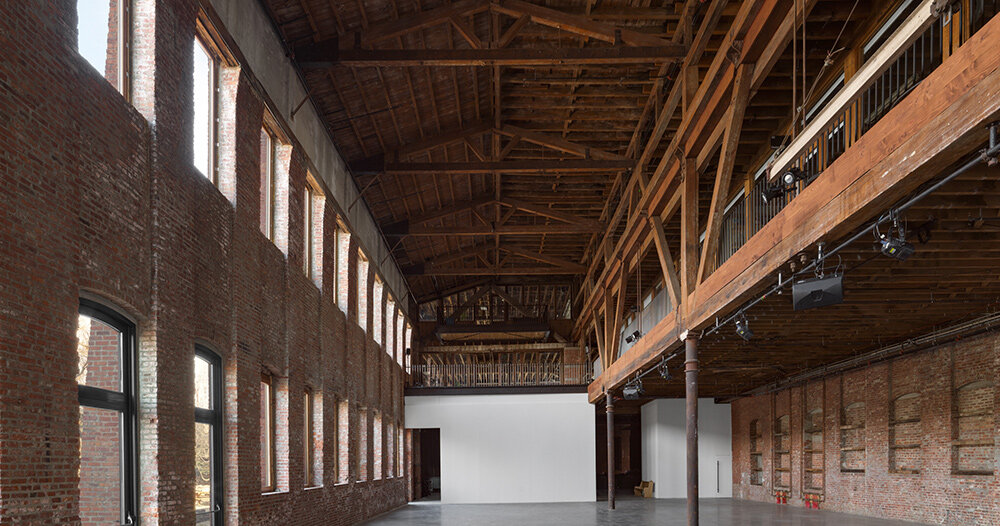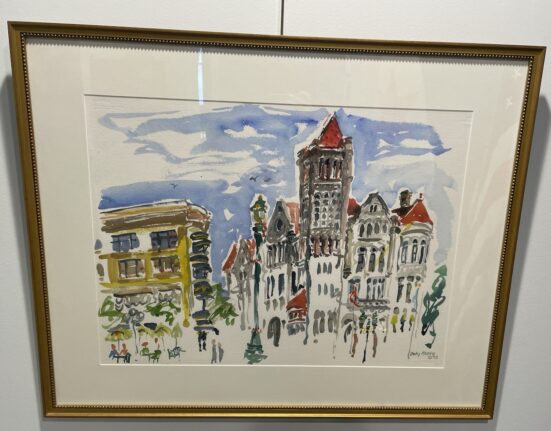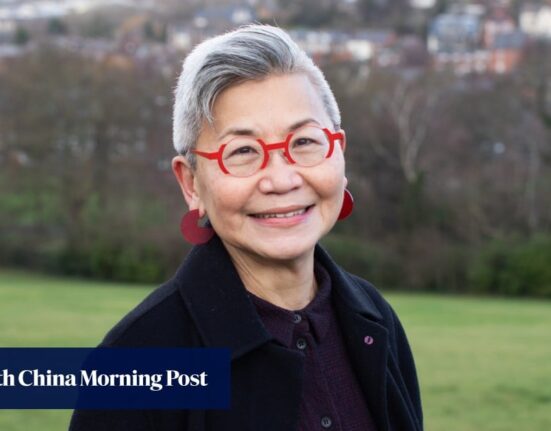renovated pioneer works to reopen on september 6th
In Red Hook, Brooklyn, Pioneer Works is reopening its doors on September 6th, 2024, with two new exhibitions by Alejandro García Contreras and Le’Andra LeSeur. After extensive construction to enhance accessibility, the organization is eager to welcome the community back to its Red Hook location. The reopening will feature Contreras’s ‘Quien no ha intentado convertir una piedra en un recuerdo?’ and LeSeur’s ‘Monument Eternal,’ followed by the return of Second Sundays, a free monthly open house, on September 8th. What’s more, a new large-scale performance commission by Narcissister will debut on September 14th and 15th.
Founded by artist Dustin Yellin, Pioneer Works spans three floors of interconnected studios, performance spaces, exhibition areas, and multipurpose rooms. These spaces encourage collaboration beyond traditional institutional boundaries, bringing together creators and thinkers. Onsite production is supported with facilities including science, design, recording, and ceramics studios; media, virtual environment, and technology labs; a darkroom; and a garden. The center further offers multidisciplinary programs, exhibitions, residencies, and performances, most of which are free to the public.
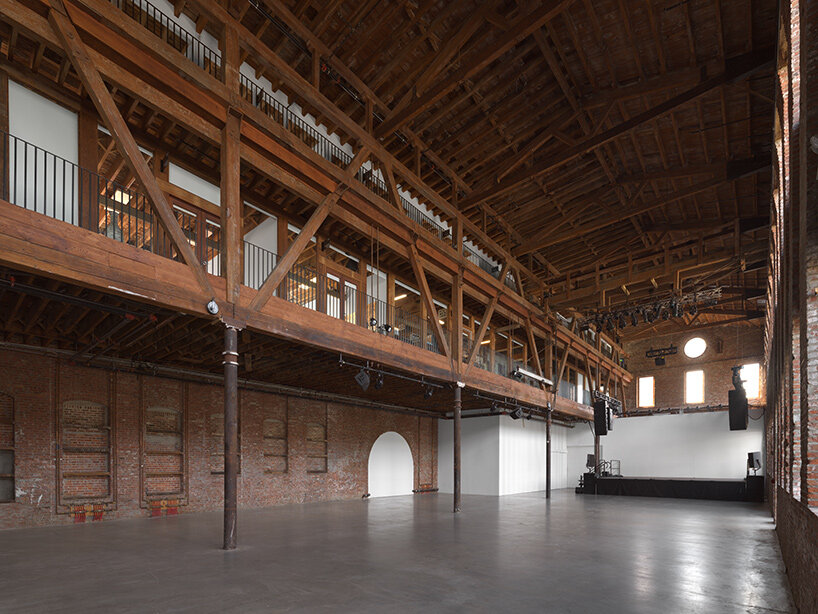
images of Pioneer Works’ Main Hall. photography by Dan Bradica, courtesy Pioneer Works
two exhibitions to debut in red hook
Running at Pioneer Works from September 6th to December 15th, 2024, ‘¿Quien no ha intentado convertir una piedra en un recuerdo?’ (‘Who hasn’t tried to turn a stone into a memory?’) is Alejandro García Contreras‘ first institutional solo exhibition. The Guadalajara-based artist, creates intricate sculptures that draw from Mexican folklore, contemporary culture, myth, eroticism, and the occult. The exhibition blends the artist’s ceramic practice with his previous interests in concrete pouring, photography, and experimental video. It explores the tension between the fleeting nature of human existence and the enduring material objects left behind. Contreras will also lead visitors through the exhibition as part of Pioneer Works’ Gallery Dialogues series during September Second Sundays.
Le’Andra LeSeur’s ‘Monument Eternal’ will run during the same time, and will examine how monuments commemorating racist histories affect the mental and physical well-being of Black communities. The exhibition, co-commissioned with the Pittsburgh Cultural Trust, focuses on Stone Mountain in Georgia, a site notorious for its Confederate carvings. This marks LeSeur’s first institutional solo presentation in New York. The artist’s work aims to foster intentional and sensitive connections with sites of violence, encouraging ongoing dialogue about their impact on Black communities. ‘Monument Eternal’ transforms memories and remnants of violence into transcendent experiences.
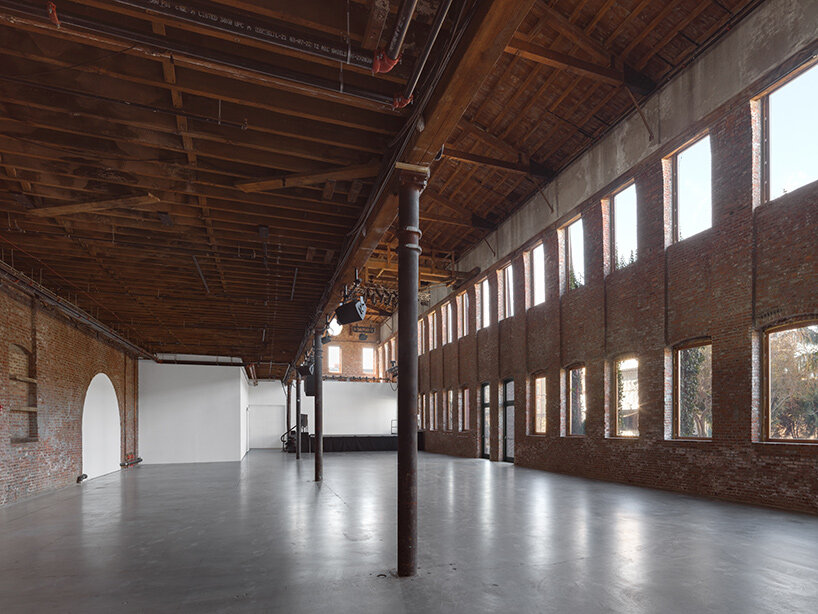
Pioneer Works, a nonprofit cultural center in Red Hook, Brooklyn, reopens after extensive renovations
large-scale performance to debut on september 14th & 15th
On September 14th and 15th, 2024, Pioneer Works will premiere ‘Voyage Into Infinity’ by Narcissister, a New York-based performance artist known for blending humor, fetish, and social commentary. This new performance commission features a kinetic installation and a cast of live performers engaging in various physical feats, lo-fi magic tricks, and indoor pyrotechnics. ‘Voyage Into Infinity’ is Narcissister’s first large-scale performance commission in over a decade.
The exhibitions and performances debuting at Pioneer Works will signal the reopening of the renovated building, and underscore its commitment to fostering innovative and interdisciplinary collaborations. designboom interviews artist and Pioneer Works founder Dustin Yellin, along with Founding Artistic Director Gabe Florenz to learn more about the programming ahead of next month’s opening.
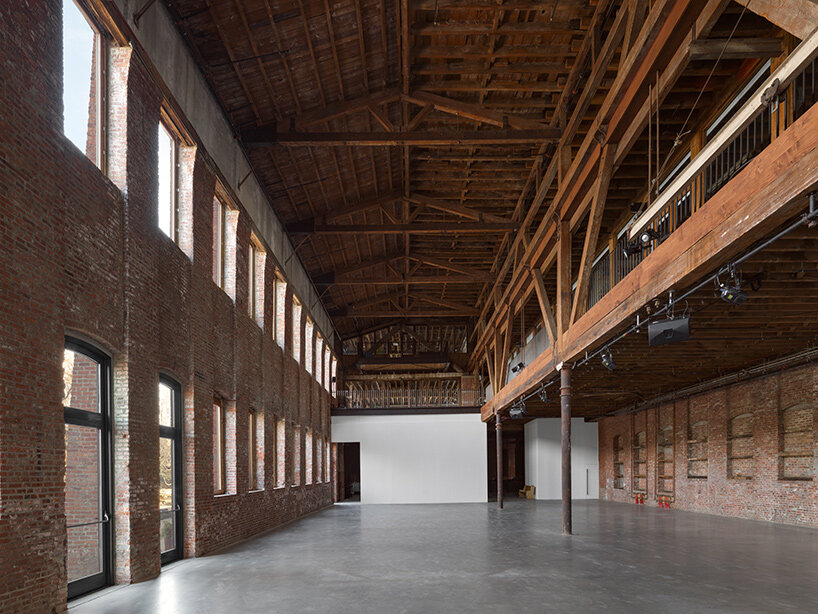
the reopening will kick off with two exhibitions by Alejandro García Contreras and Le’Andra LeSeur
interview with founder Dustin Yellin
designboom (DB): In what ways do you see these artists pushing the boundaries of contemporary art?
Dustin Yellin (DY): Gabriel and I were walking around Guadalajara, Mexico visiting many artists. The moment we walked into Alejandro’s studio, both of us immediately felt the poignancy and innovation in his use of ceramics, his ability to tell stories and to mix anima, eroticism, history and mythology. It made us excited for him to come work in the building as soon as possible.
We’re also excited to be able to support a new commission by Le’Andra LeSeur, who was a resident in our Visual Arts program not too long ago. She brings such a thoughtful, nuanced approach towards issues of history and identity. We’re thrilled to present her work, both at Pioneer Works this fall and next year, at our co-presenter Pittsburgh Cultural Trust’s Wood Street Galleries.
DB: Pioneer Works is known for its interdisciplinary approach, blending art, technology, music and science. How do you envision this approach evolving with the reopening and future exhibitions?
DY: Pioneer Works is reacting to the siloing of information systems and the parsing of knowledge into compartments that have no communication with each other. We’re finding ways to make the arts and sciences free and accessible to everyone, constantly thinking about new ways for communities to form in physical spaces, where cultural production and dissemination can happen in the same house of being.
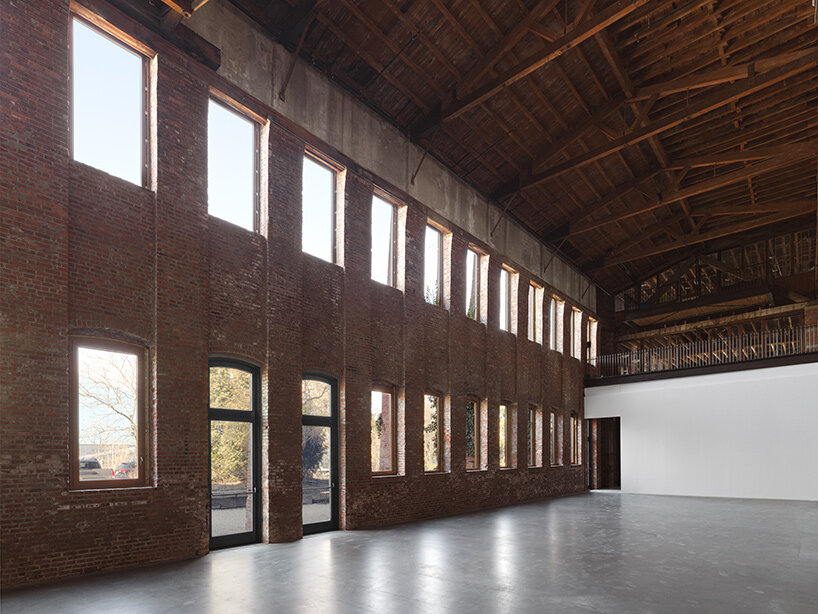
Alejandro García Contreras’s show will explore themes of Mexican folklore and the occult
DB: What are some of the most memorable moments or milestones for you since founding Pioneer Works, and how have they shaped the organization’s journey?
DY: I still remember the first time I walked inside the building. It was filled with boxes of medical and law documents waiting to be digitized and a chorus of pigeons flying in the rafters. For years I’d been thinking about how to bring multiple disciplines into one space and as soon as I walked into this Civil War era iron works, I knew this was the spot. What I didn’t understand at the time was the amount of blood, sweat and love it would take to transform this derelict hunk of bricks into an ark of culture. I think of Pioneer Works as a social sculpture that has no end: it’s constantly changing and evolving, depending on who’s working in the building and what ideas are coming to life. With the onset of artificial intelligence, the way humans learn is changing faster than we can possibly imagine. Physical spaces are now more important than ever to bring people together to learn from each other and be exposed to new nodes of thinking.
There are too many memorable moments to mention, but a few of the people who’ve wandered these halls come to mind: John Mather, Esperanza Spaulding, Gloria Steinem, Justin Vernon, Max Tegmark, Liz Magic Laser, Werner Herzog, Kip Thorne, Jacolby Satterwhite, Xaviera Simmons, Anthony McCall, Marlon James… And so many others!
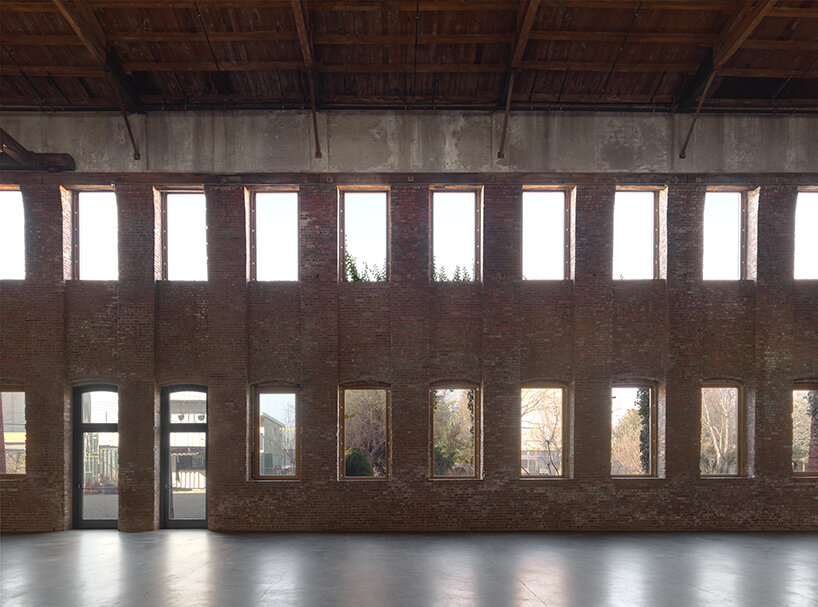
Le’Andra LeSeur dissects the impact of monuments commemorating racist histories on Black communities
interview with founding artistic director gabe florenz
DB: Le’Andra LeSeur’s Monument Eternal addresses the impact of monuments commemorating racist legacies on Black communities. How did Pioneer Works come to co-commission this powerful exhibition, and what do you hope visitors will take away from it?
Gabe Florenz (GF): I got to spend time with Le’Andra during her residency at Pioneer Works. She immediately brought incredible energy and depth into the building. Our Director of Exhibitions, Vivian Chui, suggested asking her to propose an idea for a show, and my answer was an unequivocal yes. The idea of commissioning Monument Eternal was really exciting — it was an opportunity for us to support a project that perhaps may not have been produced otherwise. The film also has potential to have a life beyond the exhibition. The concept of drawing Le’Andra’s personal connection to the complex history of Stone Mountain felt urgent.
Le’Andra is one of those artists whose practice seems intertwined with her way of life: each of her works feels like a record of her existence. I consider her to be a poet, because her work encourages us to pause, see and ask questions. I hope that visitors take that invitation to slow down, and to listen to the stories that we often miss.
DB: Alejandro García Contreras’ exhibition explores themes of memory and materiality. How do you think his work will resonate with Pioneer Works’ diverse audience?
GF: Alejandro’s work is so diverse with inspirational sources and reference points; I feel it will resonate with our broad audience. Its scope is universal — from Meso-American history to Mickey Mouse, from Japanese anime to Catholicism, from sex to death. Alejandro is currently building the exhibition here on site, so it is coming together as I write this. Although the language and concepts are all there, it is still a mystery what will take shape over the course of this next month.
It’s such a privilege to be able to work with someone like him, who has been so prolific but yet has not exhibited much within institutions. Being able to provide his first institutional solo exhibition in the United States and to push him towards a more experimental installation based direction — beyond the context of a gallery, where he has to of course consider what is commercially viable — is exciting.
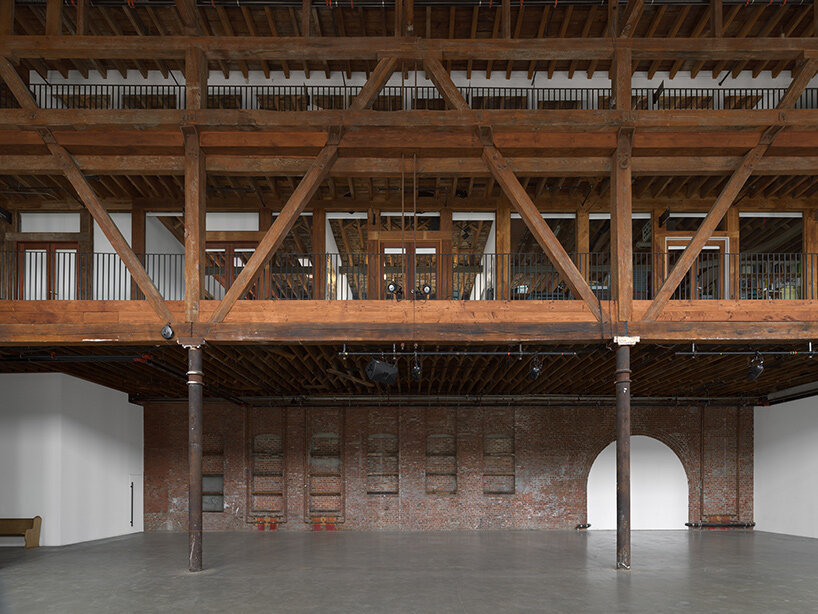
Pioneer Works will bring back its Second Sundays series, offering guided tours and interactive experiences
DB: Can you discuss the selection process for artists and exhibitions at Pioneer Works? What qualities or themes are you looking for in potential collaborators?
GF: This question has evolved for us so much over time. Over the past few years we’ve really tried to prioritize presenting and commissioning exhibitions and performances by our residency alumni. This wasn’t the case previously, as we initially wanted to establish the residency and exhibitions programs separately; we didn’t want the residency to have a specific outcome, as we see it as just a starting point for a long-form relationship that can lead to a variety of amazing outcomes.
We also consider a broad picture, as in: What do the next two years of our programming look like? Does it feel varied? Does the content of each project play off one another somehow? How do education and school programs play into the work that the artists are presenting? Do the exhibitions allow multi-disciplinary collaboration between our different departments? Does it contribute to an artist’s trajectory in a meaningful way? We tend to give many people a lot of first ‘institutional’ exhibitions, while at the same time working with legacy artists who, for whatever reason, haven’t yet been canonized or recognized enough. Sometimes you just meet someone who blows you away and you know that you have to work with them.

